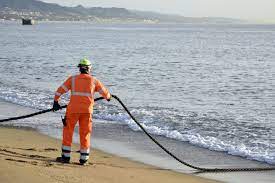Navigating the Impact: Understanding the Consequences of Damaged Red Sea Cables

The Red Sea, a vital maritime artery connecting the Middle East, Africa, and Asia, is home to a network of undersea cables that form the backbone of global telecommunications infrastructure. However, recent reports of damaged cables in the Red Sea have raised concerns about the resilience and reliability of this critical communication link. In this comprehensive analysis, we delve into the implications of damaged Red Sea cables, exploring the challenges they pose to regional connectivity, international trade, and global telecommunications networks.
The Importance of Red Sea Cables
Lifeline of Global Connectivity
The undersea cables crisscrossing the Red Sea play a pivotal role in facilitating global connectivity, serving as the primary conduit for internet traffic, telecommunications, and data exchange between continents. These cables form the backbone of international communication networks, enabling seamless connectivity for businesses, governments, and individuals around the world. From e-commerce and financial transactions to telecommunication services and international diplomacy, virtually every aspect of modern society relies on the uninterrupted flow of data through the Red Sea.
Gateway for Regional Trade
In addition to facilitating global connectivity, the Red Sea serves as a vital gateway for regional trade and economic activity, linking the markets of the Middle East, Africa, and Asia. The strategic location of the Red Sea has made it a hub for maritime trade routes, providing access to key ports and shipping lanes that facilitate the movement of goods and commodities between continents. Any disruption to the undersea cables in the Red Sea could have far-reaching consequences for regional economies, impacting trade flows, supply chains, and economic development across the region.
Understanding the Impact of Cable Damage
Disrupted Connectivity
Damage to undersea cables in the Red Sea can result in widespread disruptions to internet and telecommunications services, affecting businesses, governments, and individuals across multiple continents. The loss of connectivity can impede communication channels, disrupt online transactions, and hinder access to critical services such as healthcare, education, and emergency response. Moreover, the reliance of many industries on real-time data transmission means that even temporary disruptions can have significant financial implications, leading to losses in productivity and revenue.
Economic Consequences
The economic consequences of damaged Red Sea cables extend beyond immediate disruptions to connectivity, impacting regional trade, investment, and economic growth. Interruptions to internet and telecommunications services can disrupt supply chains, delay shipments, and hinder business operations, leading to losses for companies and industries reliant on seamless connectivity. Moreover, the perception of increased risk and instability in the region may deter foreign investment and undermine confidence in the reliability of regional infrastructure, further dampening economic prospects.
Strategies for Mitigation and Recovery
Rapid Repair and Restoration
In the event of damaged Red Sea cables, swift and efficient repair and restoration efforts are essential for minimizing downtime and mitigating the impact on connectivity. Establishing dedicated repair teams and mobilizing specialized vessels equipped with underwater robotics and repair equipment can expedite the process of locating and repairing cable faults. Additionally, pre-established partnerships and agreements between cable operators and telecommunications providers can facilitate coordination and collaboration during emergency response operations, ensuring a prompt and coordinated effort to restore connectivity.
Diversification of Routes
To enhance the resilience of regional connectivity, stakeholders should explore options for diversifying routing options and establishing redundant communication pathways. Investing in alternative cable routes and leveraging satellite and terrestrial communication networks can help mitigate the risk of single points of failure and reduce the impact of cable damage on connectivity. Moreover, advancements in routing technologies and dynamic traffic management systems can optimize data flows and minimize latency, enhancing overall network resilience and reliability.
| https://www.certs4sale.com/sap/c_arcig_2208-pdf-exam-dumps |
| https://www.certs4sale.com/hp/hpe0-s60-pdf-exam-dumps |
| https://www.certs4sale.com/fortinet/nse5_edr-5.0-pdf-exam-dumps |
Conclusion
In conclusion, the recent reports of damaged Red Sea cables highlight the vulnerability of global telecommunications infrastructure to disruptions and the need for proactive measures to enhance resilience and ensure continuity of connectivity. By investing in rapid repair and restoration capabilities, diversifying routing options, and fostering collaboration among stakeholders, we can mitigate the impact of cable damage and safeguard the vital communication links that underpin global connectivity and economic prosperity.


